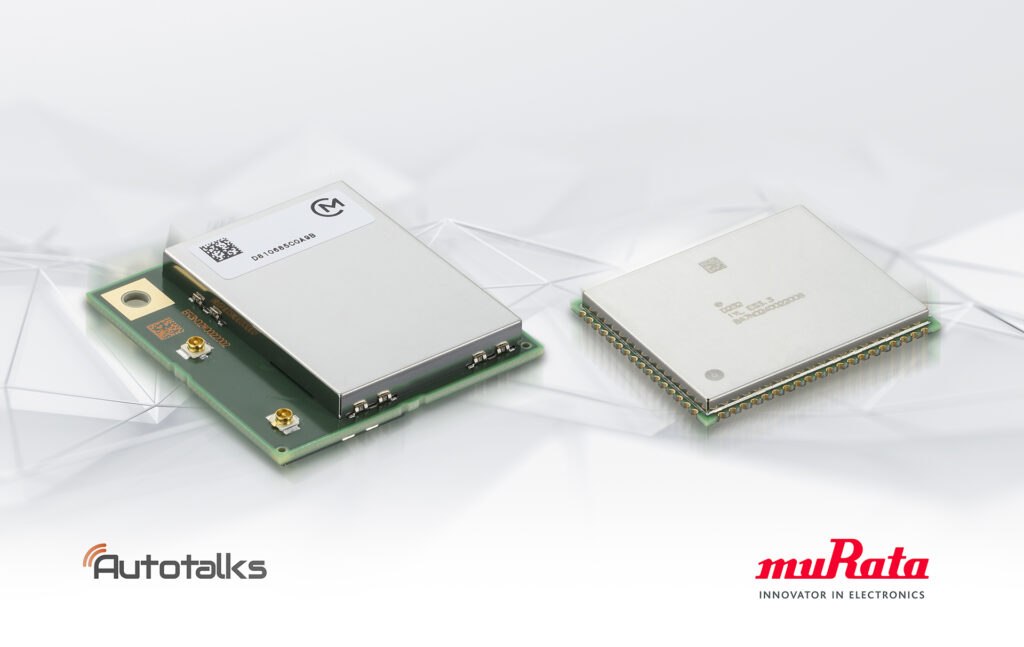Murata & Autotalks : Accelerating Adoption of V2X Tech
Autotalks and Murata Manufacturing Co. have been collaborating to create cutting-edge new technologies. It will hasten the development of cooperative safety and higher degrees of autonomous mobility as a pioneer in vehicle-to-everything (V2X) communication solutions. As a result, Murata is now able to provide a range of wireless module solutions that can allow direct V2V […]

Autotalks and Murata Manufacturing Co. have been collaborating to create cutting-edge new technologies.
It will hasten the development of cooperative safety and higher degrees of autonomous mobility as a pioneer in vehicle-to-everything (V2X) communication solutions.
As a result, Murata is now able to provide a range of wireless module solutions that can allow direct V2V and V2I communication between infrastructure and vehicles.
This V2X system can be tailored to clients’ needs for optimum adaptability. When used in host-less settings, the Type 2AN wireless module from Murata will be present. The Type 1YL will be used in cases where there is a built-in host instead.

These two automotive-grade components are based on the CRATON2 and SECTON V2X chipsets from Autotalks. These modules are extremely resilient in addition to being top performers, guaranteeing continuing reliability even under the most difficult operating situations. Numerous different vendors’ V2X software stacks can be supported by Murata modules.
Customers can select which of the two V2X communication standards they want to utilise with the Murata modules using the Autotalks chipset: DSRC or C-V2X. As a result, businesses may easily configure their programme to directly address several geographic regions (such as Europe, Asia, North America, etc.) with a single module. This implies that system designs can stay the same, resulting in much lower associated engineering costs.
These are some examples of use cases for this V2X technology:
Early identification of hidden risks – In this case, a V2V signal from an electronic emergency brake light can inform the driver that a vehicle that is using its brakes but is not yet visible to them (but will harm them) is doing so.
Prioritizing traffic and regulating speed – By using V2I, roadside infrastructure can communicate with moving cars to regulate their speed in accordance with traffic signalling procedures. This will result in decreased traffic congestion, better traffic flow (due to less accelerating and decelerating), and optimised fuel economy for drivers.
Response to accidents, updates on traffic conditions, and other use cases are more examples.
A significant automaker has already chosen to integrate Murata’s V2X modules. By the beginning of 2024, car models featuring these modules are anticipated to be on the road.
According to Toshifumi Oida, Director of the Communication Module Division at Murata, “Drawing on Autotalks’ advanced technology, along with our acknowledged expertise in the wireless domain, this unique platform represents a major step forward in enabling vehicles to cooperate on the road through V2X communication.” “The wide range of potential use cases offered will result in significantly increased road safety and decreased traffic congestion.”
Both DSRC and C-V2X can be supported on the same module thanks to the inclusion of our hybrid wireless technology, Oida says. “In addition to providing clients with a base for their V2X systems.
“We are pleased to work with Murata to market mature, high-performance V2X products. This significant accomplishment is the result of more than five years of collaborative creation, validation, thorough testing, and design optimization.
Additionally, it exemplifies the quality, reliability, and performance levels that we can accomplish by collaborating, according to Ram Shallom, vice president of business development and marketing for Autotalks in APAC.
“The flexible V2X module range of Murata will assist automotive clients all over the world expedite V2X commercialization,” Shallom writes in his conclusion. Its strong collaboration with Autotalks is a crucial step toward the widespread use of this technology.


